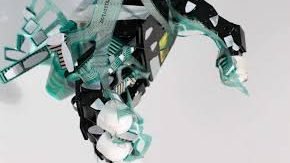Boston University researchers have developed a new, "intelligent" metamaterial—which costs less than ten bucks to build—that could revolutionize magnetic resonance imaging (MRI), making the entire MRI process faster, safer, and more accessible to patients around the world. The technology,...
Ventrix, a University of California San Diego spin-off company, has successfully conducted a first-in-human, FDA-approved Phase 1 clinical trial of an injectable hydrogel that aims to repair damage and restore cardiac function in heart failure patients who previously suffered...
Researchers from the New York Institute of Technology (NYIT) have discovered bacteriophages, viruses that infect bacteria, living in their kitchen sponges. As the threat of antibiotic resistance increases, bacteriophages, or phages for short, may prove useful in fighting bacteria...
In satellite photos of the Earth, clouds of bright green bloom across the surface of lakes and oceans as algae populations explode in nutrient-rich water. From the air, the algae appear to be the primary players in the ecological...
Chemotherapy and radiation are effective cancer treatments because they kill rapidly dividing cells, including tumor cells. But for children—whose tiny bodies are still growing—these treatments can cause lifelong damage. This is particularly true for children with brain cancer, and...
As the coronavirus outbreak shows, viruses are a constant threat to humanity. Vaccines are regularly developed and deployed against specific viruses, but that process takes a lot of time, doesn't help everyone who needs protection, and still leaves people...
EPFL scientists are developing new approaches for improved control of robotic hands -- in particular for amputees -- that combines individual finger control and automation for improved grasping and manipulation. This interdisciplinary proof-of-concept between neuroengineering and robotics was successfully...
Researchers have developed a tiny nanolaser that can function inside of living tissues without harming them.
Just 50 to 150 nanometers thick, the laser is about 1/1,000th the thickness of a single human hair. At this size, the laser can...
Instead of searching for a needle in a haystack, what if you were able to sweep the entire haystack to one side, leaving only the needle behind? That's the strategy researchers in the University of Georgia College of Engineering...
Regular use of a common type of medication, such as aspirin and ibuprofen, significantly improves survival for a third or more patients with head and neck cancer, a new study led by UC San Francisco has found.
Non-steroidal anti-inflammatory drugs,...
Scientists at Washington University School of Medicine in St. Louis have developed a new imaging agent that could let doctors identify not only multiple types of tumors but the surrounding normal cells that the cancer takes over and uses...

















